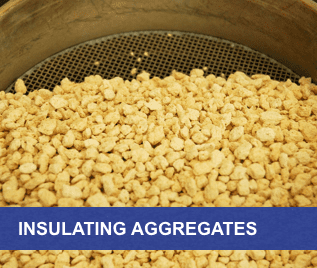Insulating Aggregates
BNZ Materials insulating aggregates are formed by crushing large slabs of specialty formulated low-density insulating material. The pulverization process is done with special equipment designed especially for this type of material.
More Info on Insulating Aggregates
BNZ 50-101 (BNZ Aggregates 2337, 2500, 2645, 2653, 2855, 2861) SDS
Typical Applications
For manufacturing insulating castables.
Loose Fill.
For insulating irregular spaces where other types of refractories are difficult to use.
Hot Topping Compound.
For covering steel ingot hot tops and risers in ferrous and non ferrous foundries.
Advantages
Blazelite insulating aggregates are available in different chemical compositions for different temperature functions. They are also available in two different gradations.
Economical.
Can be combined with shipments of other materials from the Zelienople plant to reduce freight charges. Installation as loose fill is quick – reducing labor costs versus other refractories.
High Quality.
Produced under rigorous quality standards by the same process used in manufacturing insulating fire brick.
Available Types
Blazelite Aggregates
2337 LI.
Can be combined with portland cement or calcium aluminate cements to produce a low-density, low-temperature insulating castable for 2300°F service or below.
2645 LI.
A lower density version of 2653 LI used for the very lightest castable in the 2400 to 2600°F range.
2653 LI.
A high purity material for temperatures of 2400 to 2600°F, used extensively for low-iron insulating castables.
2855 LI.
Used as a high temperature filler material and for the lightest weight high temperature castables. Its high purity is absolutely necessary for high temperature applications.
2861 LI.
An alternate to 2855 LI, it is used when a higher strength insulating castable is desired.
Disclaimer:


